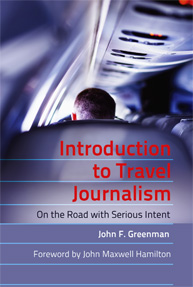Green Book
Posted: February 16, 2013 Contents: Chapter 2, Resources | Tags: black history, Deborah Bhattacharyya, Green book, negro-motorist green book, road trip, travel journalism, travel writing Leave a comment »Chapter 2 discusses guidebooks as a major part of the tourist process. As the text states guidebooks mediate the relationship between tourist and destination, as well as the relationship between the guest and host.
In the early stages of the 20th century blacks weren’t privy to such information much less experiences. A major fear and risk for African Americans was safety.
As a result a postal worker Victor Green put together a guidebook that showed blacks safe places to visit while traveling throughout the country: “The Negro-Motorist Green Book.” Nsenga Burton of the Roots.com explains to readers the books function and historical relevance. Here’s a tidbit from her article:
Like users of today’s popular recommendation sites such as TripAdvisor, travelers collected information during their journeys, which they shared…
The road or roadless to adventure
Posted: November 5, 2012 Contents: Chapter 3 | Tags: adventure journalism, adventure writing, avery stonich, backcountry, outdoor industry association, road trip, roadless areas, travel adventure, travel journalism, travel research, travel writer, travel writing Leave a comment »Chapter 3 introduces adventure as an important niche topic for travel readers. Earlier this month, adventure travelers and consequently adventure writers received good news when the Supreme Court ignored a ruling that would allow individual states to downgrade protection on roadless(backcountry areas that have few roads or significant alterations other than trails) areas that may allow things like mining and deforestation in certain outdoor adventure areas. Avery Stonich of Outdoor Industry Association calls this effort or lack of a
major win, protecting these places for future generations.
Without these roadless areas there would be very little for the adventure audience to read about.
